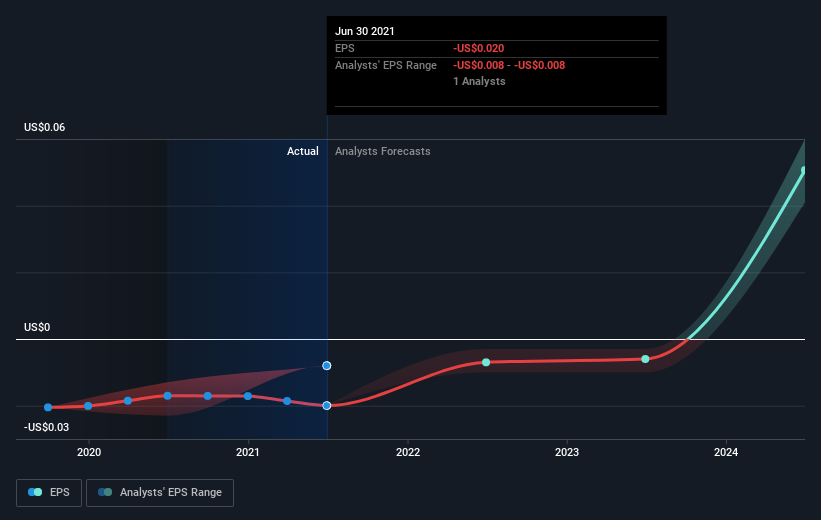Paladin Energy Limited (ASX:PDN): Is Breakeven Near?
We feel now is a pretty good time to analyse Paladin Energy Limited's (ASX:PDN) business as it appears the company may be on the cusp of a considerable accomplishment. Paladin Energy Limited develops and operates uranium mines in Australia, Canada, and Africa. On 30 June 2021, the AU$2.4b market-cap company posted a loss of US$44m for its most recent financial year. The most pressing concern for investors is Paladin Energy's path to profitability – when will it breakeven? Below we will provide a high-level summary of the industry analysts’ expectations for the company.
View our latest analysis for Paladin Energy
Consensus from 4 of the Australian Oil and Gas analysts is that Paladin Energy is on the verge of breakeven. They anticipate the company to incur a final loss in 2023, before generating positive profits of US$133m in 2024. So, the company is predicted to breakeven approximately 2 years from today. What rate will the company have to grow year-on-year in order to breakeven on this date? Using a line of best fit, we calculated an average annual growth rate of 60%, which signals high confidence from analysts. If this rate turns out to be too aggressive, the company may become profitable much later than analysts predict.
We're not going to go through company-specific developments for Paladin Energy given that this is a high-level summary, however, keep in mind that typically energy companies, depending on the stage of operation and resource produced, have irregular periods of cash flow. This means that a high growth rate is not unusual, especially if the company is currently in an investment period.
One thing we’d like to point out is that The company has managed its capital judiciously, with debt making up 28% of equity. This means that it has predominantly funded its operations from equity capital, and its low debt obligation reduces the risk around investing in the loss-making company.
Next Steps:
There are key fundamentals of Paladin Energy which are not covered in this article, but we must stress again that this is merely a basic overview. For a more comprehensive look at Paladin Energy, take a look at Paladin Energy's company page on Simply Wall St. We've also put together a list of essential factors you should look at:
Valuation: What is Paladin Energy worth today? Has the future growth potential already been factored into the price? The intrinsic value infographic in our free research report helps visualize whether Paladin Energy is currently mispriced by the market.
Management Team: An experienced management team on the helm increases our confidence in the business – take a look at who sits on Paladin Energy’s board and the CEO’s background.
Other High-Performing Stocks: Are there other stocks that provide better prospects with proven track records? Explore our free list of these great stocks here.
Have feedback on this article? Concerned about the content? Get in touch with us directly. Alternatively, email editorial-team (at) simplywallst.com.
This article by Simply Wall St is general in nature. We provide commentary based on historical data and analyst forecasts only using an unbiased methodology and our articles are not intended to be financial advice. It does not constitute a recommendation to buy or sell any stock, and does not take account of your objectives, or your financial situation. We aim to bring you long-term focused analysis driven by fundamental data. Note that our analysis may not factor in the latest price-sensitive company announcements or qualitative material. Simply Wall St has no position in any stocks mentioned.

 Yahoo Finance
Yahoo Finance 
